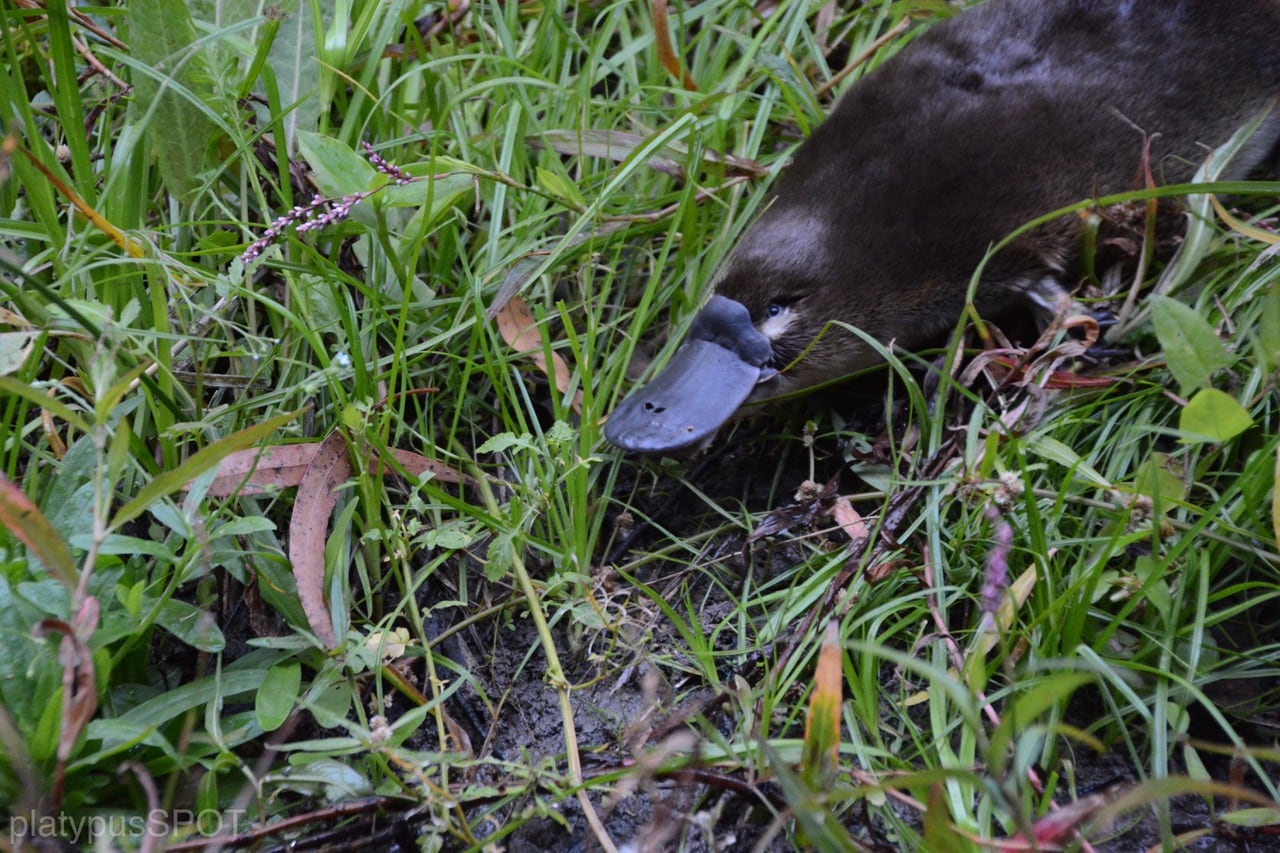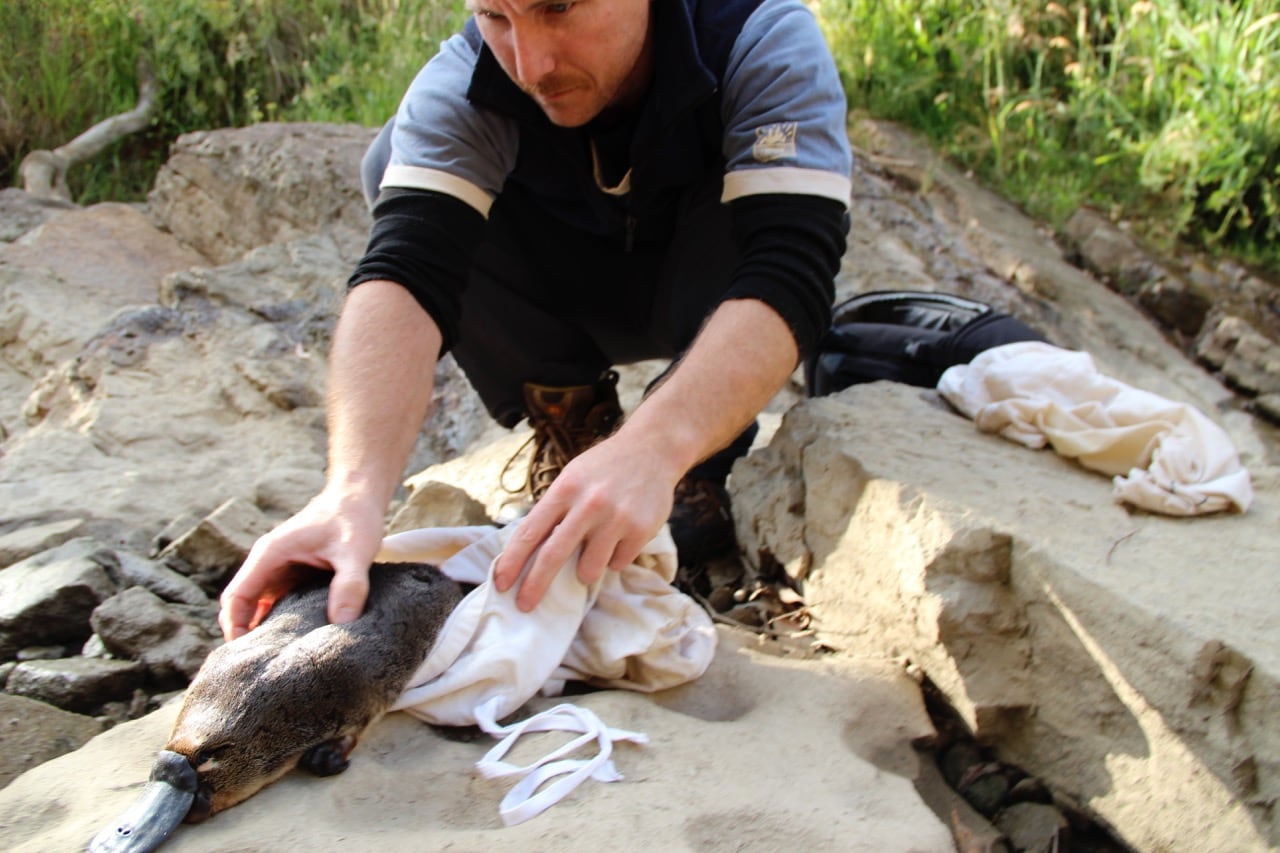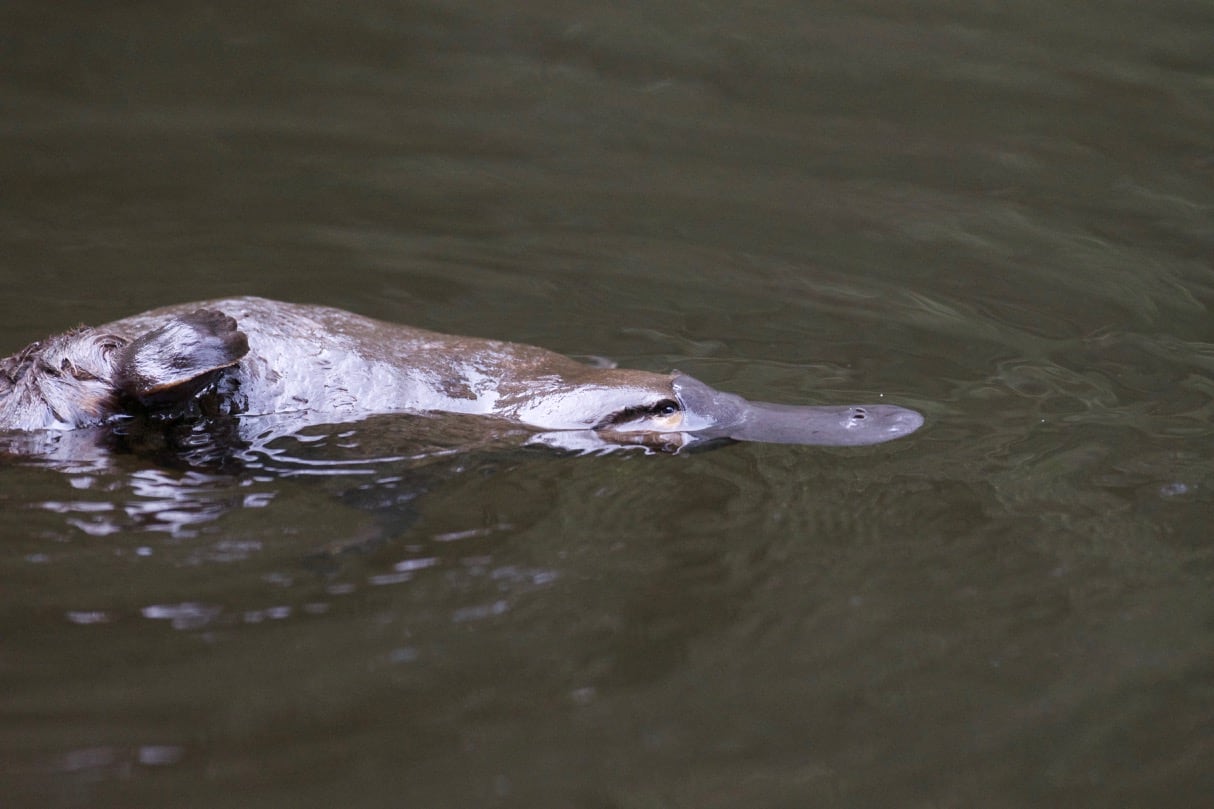National icon, the platypus, declared a threatened species in Victoria

In light of the Victorian Government last weekend listing the platypus as Threatened in Victoria, comprehensive data on the species distribution throughout the State is urgently required to fully understand population status at both local and landscape levels and help inform management strategies which heavily rely on accurate spatial data.
For many species in freshwater ecosystems, this data has previously been too difficult and costly to collect at a landscape level, which greatly impedes the ability to prioritise and implement management actions to reverse declines and prevent further extinctions.
Environmental not-for-profit Odonata, in partnership with wildlife detection and monitoring service EnviroDNA and Outback Academy Australia (OAA), have today proposed a project to map the entire distribution of platypuses throughout Victoria’s waterways to inform future management solutions to reverse the decline of populations throughout the State.
The comprehensive citizen science-based project called ‘The great Victorian platypus search’ will collect vital population data using environmental DNA (eDNA). This technology detects the DNA a species leaves behind in its environment (such as water) and is a highly sensitive and cost-effective technique to determine distributions of aquatic species over large spatial scales, particularly for sparse and cryptic species like the platypus.

Experienced biodiversity impact investor and founder of Odonata, Nigel Sharp, said that this is a necessary step to saving the species.
“Before we can develop a plan to reverse their decline, we first have to fill a critical gap in our current understanding of the species’ populations. This could potentially reveal platypus occurrence in new areas where no previous records exist.
The data collected will also provide the ability to identify refuge areas and prioritise and implement management actions to reverse declines and prevent further local extinctions” said Nigel.
Importantly for this project, EnviroDNA has developed a robust and simple eDNA sampling methodology that citizen scientists, including school students, children and community groups can undertake with limited training or experience.

This methodology has been used with great success to monitor local populations of many species, including platypuses, with citizen scientists in Victoria, NSW and Queensland on small scales with partner groups Upper Barwon Landcare Network, Project Platypus, Upper Campaspe Landcare Group, Cattai Hills Environment Network, East Gippsland Landcare Network and Wildlife Queensland.
Director of EnviroDNA and Senior Research Fellow at The University of Melbourne, Dr Andrew Weeks, says that this technology has been successful in previous projects with citizen-scientists.
“We’ve been using this technology for several years to map local populations of platypuses, but with the latest announcement of it being listed as threatened, we need to significantly up the scale of site testing in Victoria so we can fast track solutions.
“Platypuses are a national icon for Australia, and we believe that it is our shared responsibility to ensure the species’ future in our state,” said Andrew.
Neville Atkinson, OAA Business Development Manager added: “Platypuses are culturally, spiritually and environmentally significant to Indigenous people. It’s imperative that this type of research happens now”.

The proposed project will ask citizen scientists around Victoria to collect water samples from designated sites during the breeding season for platypuses (August-October) and to share the samples with EnviroDNA’s laboratory to be screened for platypus DNA. Victorians will also be encouraged to submit sightings of platypuses via the platypusSPOT web platform or app with all results to be shared online in real-time for the Victorian public to view.
Odonata and EnviroDNA are calling on Victorians to not only donate to the project but to sign up as a potential volunteer by visiting its website. The majority of funding will go towards providing more than 2000 free testing kits to be sent to citizen scientists and the analysis of all samples for the presence of platypus DNA.
Outback Academy Australia will also engage an Indigenous ranger to co-manage the project and support the citizen scientists.
About Odonata
Odonata is a not-for-profit entity supporting biodiversity impact solutions. Founded in 2017 by Nigel Sharp, we create, support, nurture and empower businesses and entrepreneurs to move towards a more environmentally sustainable world.
As a biodiversity and threatened species manager, innovator and advisor, Odonata have the know-how and networks to influence impact investment funds. Our knowledge, trust and reputation have led to strategic collaborations with universities, businesses and NGOs – ultimately delivering results.
About EnviroDNA
EnviroDNA uses cutting-edge environmental DNA (eDNA) technology for wildlife detection and monitoring. At the forefront of research and application in Australia, we provide eDNA services that innovate how our clients gather wildlife and biodiversity data, helping to protect our fragile biodiversity.
In 2016, Dr Paul Umina and Dr Andrew Weeks, launched EnviroDNA to focus on direct real-world applications of eDNA. Teaming up with Managing Director, Helen Barclay, the EnviroDNA team are industry leaders, routinely applying their skills in sampling design, molecular genetics and science communications to improve wildlife and biodiversity management through eDNA.
About Outback Academy Australia
OAA is an Indigenous led, not-for-profit organisation with a charter to broker alliance-based regenerative farming and environmental management projects that bring about the greatest good for the greatest number and Country. Outback Academy works with partners such as Odonata to build capability and capacity on-the-ground for farming and environmental management, including for the protection of endangered species.
OAA brokers and advises protocols for engagement and participation of Traditional Owners, community-controlled organisations and private landholders in alliance-based projects, alongside development of skills and employment of young and other Indigenous people in business and research activities.

